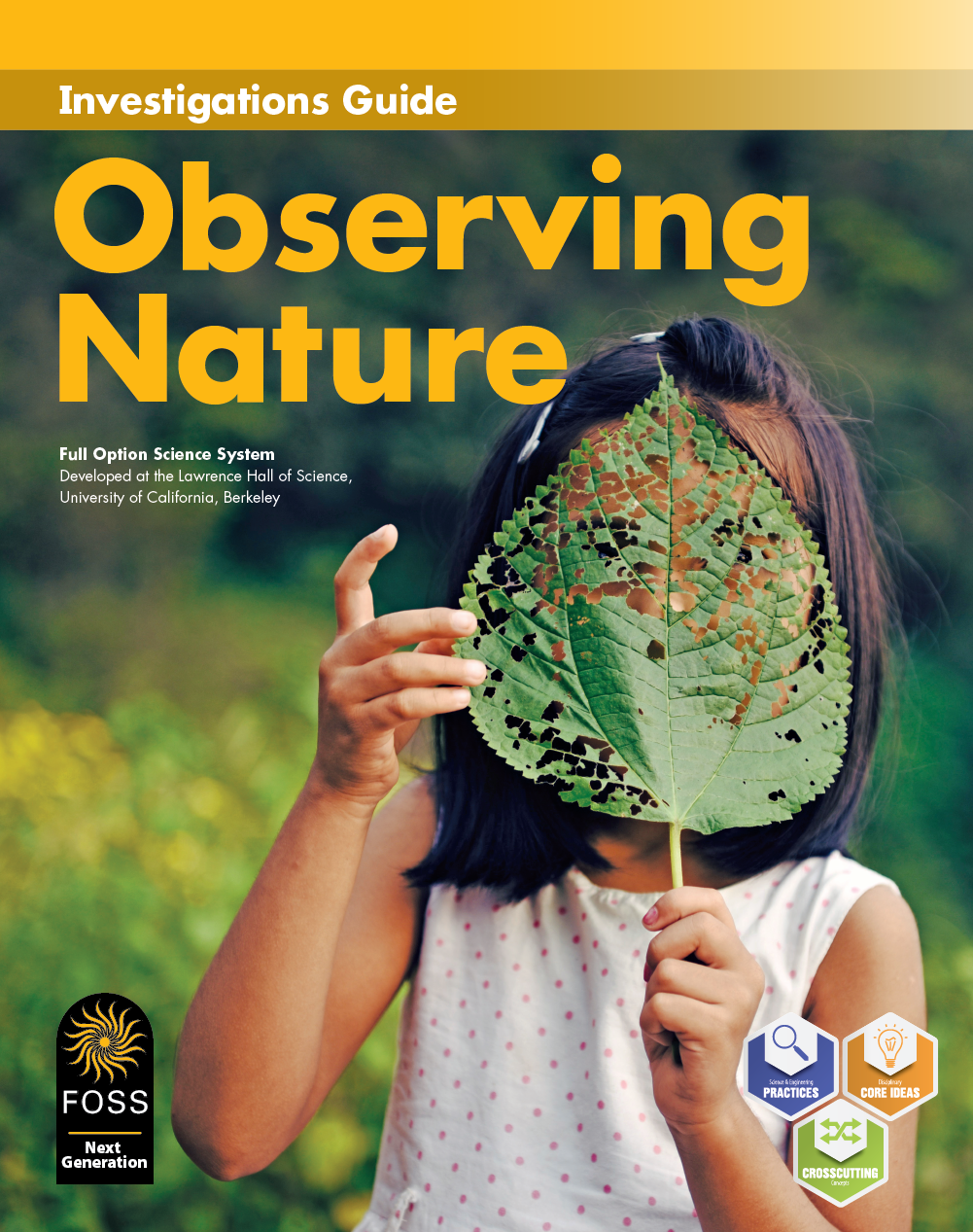FOSS Next Generation Observing Nature
Grade Pre-K

To a young student, the oak on the corner, the pines at the park, and the orange tree at school are all phenomena. Systematic investigation of trees and their leaves, the animals that make their home in leaf litter, the soil and rocks around the roots, and the wood that comes from trees will bring students to a better understanding of the place of trees at school and in the community.
Investigation 1: Trees
Students are introduced to the phenomenon of trees in the environment and the driving question—What is a tree? Students go on a walk around the schoolyard, developing general concepts about trees and discussing how trees are useful to people and animals. The class adopts several trees to observe throughout the school year. A classroom tree scrapbook documents students’ observations through the seasons. They extend their understanding of trees as a changing, living part of their world. During each season, students visit the schoolyard trees; observe their branches, leaves, flowers, and seeds; and describe changes.
Investigation 2: Leaves
Students engage with the phenomenon of leaves to expand their understanding of what a tree is. Students begin with a schoolyard walk, focusing on the leaves of trees. They match leaves to geometric shapes, go on a leaf hunt to compare properties of leaves, work at centers with representational materials, and make a leaf book.
Investigation 3: Earth Materials
Students focus on the earth materials that provide the environment for a tree. Students observe rocks, sort them by properties, and describe changes when they put rocks in water. Students collect and describe soil samples and make mud paint to observe the colors. They freeze and melt water to observe phase change, and discuss water, rocks, and other natural resources that can be conserved through reuse and recycling.
Investigation 4: Isopods
Animals make their homes in and around trees. Small animals, such as isopods, are often found in the leaf litter at the base of a tree. Students engage with the phenomenon of isopods. Students observe structures of two kinds of isopods. They learn to identify which are pill bugs and which are sow bugs. They hold isopod races. Students make a terrarium in which the isopods and plants live together. They compare photos and read about isopods. They read about and compare illustrations of a variety of animals and discuss the differences between living and nonliving things.
Investigation 5: Wood
Trees are the source of the material wood—a material students encounter every day in many ways. Students work with three different wood samples to observe the properties of wood. They begin with free exploration, drop water on wood samples, and float them in basins. Students explore the room and label objects made of wood. They use sandpaper to change the shape of wood. They compare sawdust and shavings and how they interact with water. They simulate the manufacture of plywood.